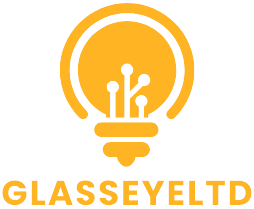Table of Contents
ToggleIn the fast-paced world of digital marketing, programmatic marketing stands out like a unicorn in a field of horses. It’s the secret sauce that transforms the way brands connect with consumers, using data-driven strategies to deliver ads that feel personal rather than intrusive. Imagine a marketing campaign that knows your preferences better than your best friend—now that’s a game changer!
Overview of Programmatic Marketing
Programmatic marketing represents a transformative approach in the digital marketing realm. This method harnesses technology and data to automate ad buying, resulting in highly targeted advertising campaigns.
Definition and Key Concepts
Programmatic marketing refers to the use of software and algorithms to purchase digital advertising space. This approach replaces traditional ad buying techniques that rely on human negotiation. Key concepts include real-time bidding, where advertisers bid for ad placements in milliseconds, and demand-side platforms, which help advertisers manage their ad inventory efficiently. Additionally, supply-side platforms assist publishers in maximizing their ad revenues. These concepts contribute to a streamlined process that enhances targeting accuracy and campaign effectiveness.
Importance in Digital Advertising
Programmatic marketing plays a critical role in the current digital advertising environment. It allows brands to reach specific audiences based on various data points like demographics, interests, and online behavior. Businesses benefit from increased efficiency, as automated systems reduce the time and resources needed for ad placements. Furthermore, programmatic advertising yields better ROI due to precise targeting and optimization capabilities. As competition intensifies, leveraging programmatic strategies becomes essential for brands seeking to maintain a competitive edge.
How Programmatic Marketing Works

Programmatic marketing relies heavily on technology to automate the ad buying process. This method streamlines campaigns, making them more efficient and effective.
The Role of Data and Algorithms
Data drives programmatic marketing. It gathers user behavior data and preferences, allowing marketers to target specific audiences with precision. Algorithms analyze this data, determining when and where ads appear based on real-time conditions. Many companies use machine learning to improve targeting and enhance ROI. By leveraging data insights, brands can tailor messages that resonate with individual consumers, increasing engagement rates.
Types of Programmatic Advertising
Several types of programmatic advertising exist to meet diverse marketing goals. Real-time bidding involves auctioning ad space in real-time, ensuring competitive pricing. Direct programmatic deals enable marketers to purchase inventory directly from publishers, leading to clearer communication and fewer intermediaries. Programmatic guaranteed allows for fixed pricing and reserved ad inventory, targeting specific audiences more reliably. These methods enhance the overall effectiveness of advertising campaigns, providing flexibility and reach across various platforms.
Advantages of Programmatic Marketing
Programmatic marketing offers significant benefits in the digital advertising arena, primarily through its efficiency and targeting capabilities.
Efficiency and Targeting
Automation streamlines the ad buying process, resulting in faster campaign execution. Real-time bidding allows advertisers to bid on ad space instantly, reaching audiences more effectively. Data-driven strategies ensure precise targeting, enabling brands to connect with potential customers based on specific behaviors and interests. Algorithms analyze user data, allowing marketers to refine their targeting efforts continuously. By obtaining insights into consumer preferences, campaigns deliver relevant ads that resonate. This precision enhances overall engagement, driving higher conversion rates for brands.
Cost-Effectiveness
Programmatic marketing often results in lower advertising costs by reducing manual labor and negotiation time. The use of data and technology minimizes wasted ad spend by targeting only relevant audiences. Dynamic bidding strategies allow advertisers to pay only what is necessary for optimal placements. Various programmatic models, such as programmatic guaranteed deals, offer flexibility in budgeting and allocation. With enhanced targeting, advertisers achieve better returns on investment, making every dollar spent count. Brands can optimize their campaigns based on performance analytics, ensuring continuous improvement and increased cost efficiency.
Challenges and Considerations
Programmatic marketing faces several challenges that can impact its effectiveness and reliability. Brands must navigate these hurdles for successful execution of their strategies.
Privacy Concerns
Privacy concerns significantly affect programmatic marketing campaigns. Regulations like GDPR and CCPA impose strict guidelines on data collection and usage. Advertisers must comply with these laws or risk facing hefty fines. Not only do they need to mitigate consumer privacy risks, but they also need to build trust with their audiences. Transparency in data usage often enhances consumer confidence and fosters stronger brand-consumer relationships. Additionally, third-party cookies are becoming increasingly restricted, limiting tracking capabilities and personalized targeting. Brands must adopt alternative methods that respect user privacy while still achieving effective targeting.
Ad Fraud Issues
Ad fraud poses a serious threat within the programmatic marketing landscape. It encompasses various types of fraudulent activities, such as bot traffic, click fraud, and impression fraud. Brands face substantial financial losses due to misleading metrics and inflated ad performance reports. Effective prevention measures require continuous monitoring and sophisticated technology to identify fraudulent behavior. Collaborations with trusted partners and utilizing verified ad networks can also help combat these issues. Advertisers should invest in robust analytics tools to detect anomalies in campaign performance and mitigate risks associated with ad fraud. Implementing these strategies enhances the overall security of programmatic marketing efforts.
Future Trends in Programmatic Marketing
Programmatic marketing continues to evolve, shaped by technology and changing consumer dynamics. Emerging trends highlight the increasing importance of automation and AI as well as shifts in consumer behavior.
Automation and AI Integration
Automation significantly enhances programmatic advertising efficiency. Incorporating AI enables platforms to analyze vast amounts of data in real-time, optimizing ad placements instantly. Predictive analytics play a crucial role, allowing marketers to forecast trends and adjust budgets dynamically. Brands leveraging machine learning improve audience targeting accuracy, resulting in better engagement rates. Sophisticated algorithms assess user interactions, providing insights that help fine-tune campaigns. As automation tools evolve, marketers will find it easier to personalize ads tailored to individual preferences and habits.
Evolving Consumer Behavior
Consumer behavior has shifted toward a preference for personalized experiences. Today’s audiences expect relevant ads, making targeted marketing imperative. Increased use of mobile devices drives demand for instant content, pushing brands to adapt strategies rapidly. Social media interactions influence purchasing decisions, creating opportunities for programmatic ads to capitalize on engagement. Consumers’ growing awareness of ad privacy fosters a demand for transparency, influencing how advertisers approach data collection. Understanding these behavioral changes allows marketers to refine their strategies and build deeper connections with potential customers.
Programmatic marketing stands as a vital component in today’s digital landscape. Its ability to leverage data and technology transforms how brands connect with consumers. As advertisers navigate the complexities of privacy regulations and emerging technologies, the focus on efficiency and personalization remains paramount.
The future of programmatic marketing will likely be shaped by advancements in AI and automation, further refining targeting capabilities and enhancing engagement. Brands that embrace these changes will not only foster deeper relationships with their audiences but also drive better ROI. Staying ahead in this dynamic environment requires continuous adaptation and a commitment to transparency, ensuring that programmatic marketing evolves in line with consumer expectations.




